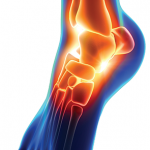Attracting high-quality research manuscripts from the developing world (in particular Africa and China) was one of Dr. Davis’ most significant contributions to the journal, Dr. Adebajo says. “It would be no exaggeration to say that Dr. Davis has managed to use the journal to improve the quality of rheumatology in particular, and academic medicine more generally, in the developing world,” he adds.
Steps to Success
In creating a more successful Clinical Rheumatology, Dr. Davis guided the staff to make some changes. They restructured the content, for example, to draw a hard line between clinical topics and basic science. This change has been apparent, says Anthony Russell, MD, professor of medicine at the University of Alberta in Edmonton, Canada, who was on the ILAR executive committee before Dr. Davis. In Dr. Davis’ tenure, the journal has changed in that, “isolated case reports, the sort of ‘Well, what do you know?’ reports,” are no longer accepted, Dr. Russell notes. Instead, the content has become focused on clinical papers and reviews, content that includes usable conclusions and hypotheses.
By making the journal strictly a clinical publication, Dr. Davis eliminated the need to compete with the numerous journals that publish basic science and at the same time made the content ready to use. “When people read the journal and they read an edition, I like to think people can walk away and say, ‘That was good, and something I can try in my practice tomorrow,’” he says.
Strength in Style
Dr. Davis’ work style was complementary to this process because he is respectful and supportive as well as forthright, says Cesar Ramos-Remus, MD, MSc, professor of rheumatology at the University of Guadalajara, Mexico, who worked as an associate editor on Clinical Rheumatology for nearly eight years. “He always express[es] clearly what he wants, and his view about what Clinical Rheumatology should be, but always listen[s] to opinions from the editorial board even if [they] are divergent. His ability to concert opinions and gather people to help Clinical Rheumatology is remarkable.”
In addition to these traits, Dr. Adebajo commented on his appreciation of Dr. Davis’ “jovial nature” and “utter commitment and dedication to excellence in clinical practice, teaching, and research.”
His dedication includes a focus on ensuring the international success of the journal. “Clinical Rheumatology truly became international when Paul Davis became EIC,” Dr. Ramos-Remus says. “He selected an editorial board with different backgrounds, latitudes, and expertise. Under his guidance, the revision process of the submitted manuscripts was more stringent. Now, authors from every continent submit papers to Clinical Rheumatology.”

